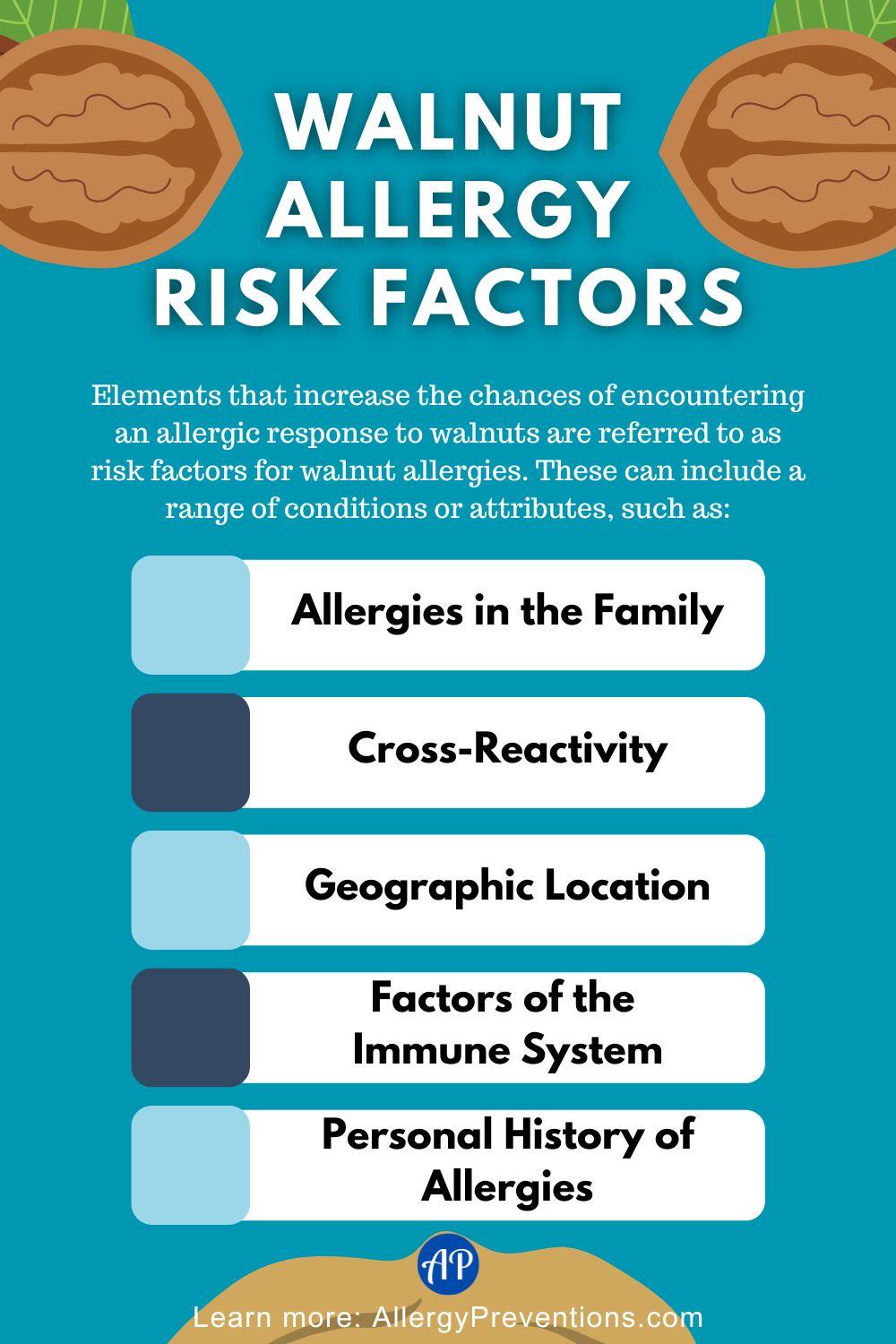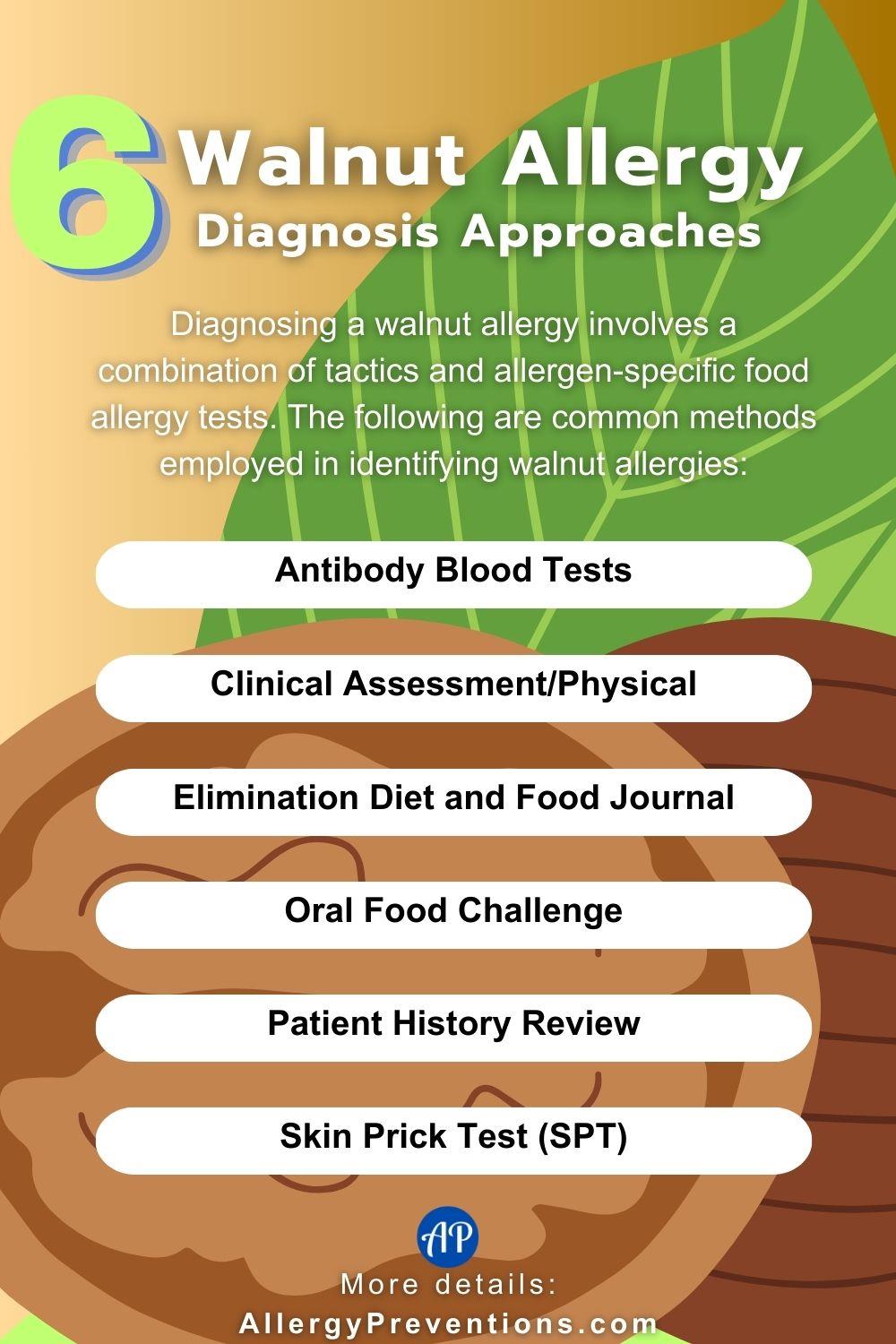In the realm of food allergies, where dietary considerations often become a daily concern, walnut allergies stand out as a significant challenge for many individuals. Walnuts, known for their rich flavor and nutritional benefits, are a staple in various cuisines. However, for those with walnut allergies, indulging in this nutrient-packed nut can lead to a cascade of adverse reactions ranging from mild discomfort to severe, life-threatening conditions.
Join us as we embark on a journey into the intricate world of walnuts and allergies – exploring the symptoms, potential risks, and, most importantly, effective strategies for managing this allergenic response.

As an Amazon associate, I may get compensation for qualifying purchases.
Table of Contents
Understanding Walnuts and Allergies
Allergic reactions to walnuts specifically involve the immune system responding to proteins present in the nuts. These reactions can vary from mild discomfort to severe, life-threatening anaphylaxis. Understanding walnut allergies requires insight into the broader spectrum of tree nut allergies. Almonds, cashews, and walnuts, among others, belong to a family of allergens capable of eliciting immune responses in individuals with sensitivities.
Foods in the Walnut Family

There are several types of walnuts in the “walnut family”, each with its own unique characteristics. Some common types of walnuts include:
- Black Walnut (Juglans nigra): Known for its strong flavor, the black walnut has a thicker shell compared to the English walnut. It is native to North America.
- English Walnut (Juglans regia): This is the most widely cultivated and consumed walnut variety globally. It has a thin shell and a mild, sweet flavor.
- Heartnut (Juglans ailantifolia var. cordiformis): These walnuts have a heart-shaped nut and are a variant of the Japanese walnut.
- Japanese Walnut (Juglans ailantifolia): Native to Japan, this walnut variety is cultivated for its edible nuts.
- Persian Walnut (Juglans regia ‘Purpurea’): This variety is valued for its unique reddish-purple foliage. It is a cultivar of the English walnut.
- White Walnut (Juglans cinerea): Also known as the butternut, this walnut species has a buttery flavor and is native to North America.
It’s important to note that English walnuts are the most commonly found and consumed type in many regions, and they are often referred to simply as “walnuts” in everyday language. The flavor and characteristics can vary among these types of walnuts.
Causes of Walnut Allergies
The cause or trigger of walnut allergies comes from specific walnut proteins. The specific proteins present in walnuts that trigger allergic reactions are Jug r 1, Jug r 2, Jug r 3, and Jug r 4. Having one or more risk factors increases the likelihood of reacting to one of these proteins.
Walnut Allergy Risk Factors

Factors that elevate the likelihood of experiencing an allergic reaction to walnuts are known as walnut allergy risk factors. These may encompass various conditions or characteristics, such as:
- Allergies in the Family: Individuals with a familial background of allergies may face an increased likelihood of developing allergic reactions due to genetic factors.
- Cross-Reactivity: Individuals with allergies to other tree nuts or foods related to walnuts may face an increased likelihood of experiencing cross-reactive reactions, primarily because of similarities in proteins.
- Geographic Location: Climate, vegetation, and local flora can impact the types and amounts of allergens present in the air.
- Factors of the Immune System: Specific characteristics and reactions of the immune system might play a role in the onset of allergies. The precise mechanisms are not completely understood.
- Personal History of Allergies: A history of allergies can increase susceptibility to other allergies due to a heightened reactivity of the immune system.
Symptoms and Reactions to Walnuts

Allergic reactions to walnuts can present in diverse ways. If you have a walnut allergy, symptoms may arise upon ingesting or encountering walnuts or products containing them. Typical reactions include:
- Gastrointestinal Symptoms:
- Abdominal pain or cramps
- Diarrhea
- Nausea
- Vomiting
- Mouth and Throat Symptoms:
- Itchy or swollen lips, tongue, or throat
- Swelling of the face
- Respiratory Issues:
- Coughing (allergy cough)
- Runny or stuffy nose
- Shortness of breath
- Sneezing
- Wheezing or chest tightness
- Skin Reactions:
Walnut allergies can vary in severity among individuals. Some may experience mild symptoms, while others may have more severe reactions, including anaphylaxis.
- Anaphylaxis:
- Anaphylaxis is a severe, potentially life-threatening allergic reaction that can occur rapidly.
- Symptoms may include a sudden drop in blood pressure, difficulty breathing, loss of consciousness, and a feeling of impending doom.
Anaphylaxis requires immediate medical attention, as it can be fatal if not treated promptly with epinephrine (adrenaline) and other emergency measures.
If someone suspects they have a walnut allergy or has experienced any of these symptoms after walnut exposure, they should seek medical advice and, if diagnosed with an allergy, take appropriate precautions to avoid walnut-containing foods and products.
Diagnosis and Testing

Identifying a walnut allergy requires a blend of evaluating medical history, conducting a physical examination, and employing specialized food allergy tests. The following are typical approaches used in diagnosing walnut allergies:
- Blood Tests: Utilizing specific IgE blood tests enables the measurement of antibody levels (IgE) generated by your body in reaction to walnut proteins. Elevated antibody levels could suggest an allergy; however, it’s important to note that this test may not always provide a conclusive diagnosis.
- Clinical Assessment: A physical examination may be performed to evaluate potential skin reactions, such as hives or eczema, and respiratory symptoms that could be linked to a walnut allergy.
- Elimination Diet and Food Journal: Walnuts are excluded from your diet for a specified duration. This is followed by a systematic reintroduction of walnuts, all while carefully observing and recording any potential symptoms.
- Oral Food Challenge: This entails carefully consuming walnuts under controlled conditions to monitor potential allergic reactions. Usually conducted in a medical environment, this procedure ensures the availability of emergency equipment in case of a severe response.
- Patient History: A thorough medical history will be obtained by the healthcare provider, encompassing details about prior allergic responses, any symptoms encountered following walnut consumption, and the presence of allergies in the family.
- Skin Prick Test (SPT): Small quantities of walnut allergen extract are administered onto the skin, followed by a gentle prick with a small needle. In the case of an allergy, a small raised bump or hive is likely to manifest at the test site.
Walnut Allergy Treatment and Prevention

The most efficient and frequently recommended approach to address a walnut allergy is the rigorous avoidance of walnuts and products containing them. Nevertheless, complete avoidance may not be feasible in all situations. Here are some guidelines your doctor might suggest for the management and treatment of a walnut allergy:
- Allergen Avoidance:
- The most effective way to prevent allergic reactions is to avoid all sources of walnuts and walnut products.
- Read food labels carefully, ask about ingredients when dining out, and be cautious about cross-contamination in food preparation.
- Antihistamines:
- Over-the-counter or prescribed antihistamines can help relieve mild allergy symptoms, such as itching, hives, and nasal congestion.
- These medications may not be sufficient for treating severe reactions and are not a substitute for epinephrine in an emergency.
- Epinephrine (Adrenaline) Injection:
- In cases of severe allergic reactions (anaphylaxis), an epinephrine auto-injector (such as EpiPen) should be administered immediately.
- Make sure the individual is familiar with how to use the auto-injector and seek emergency medical help promptly.
- Wear Medical Alert Identification:
- Individuals with severe allergies, especially those at risk of anaphylaxis, should wear a medical alert bracelet or necklace indicating their walnut allergy.
- This can provide crucial information to healthcare professionals in case of an emergency.
People with a walnut allergy should collaborate closely with their healthcare provider to create a comprehensive action plan, encompassing emergency protocols and continuous management strategies.
What is your story? I am curious about what your experience has been with walnut allergies. Send me an email if you would like to share: Chris@allergypreventions.com

Have you bought an allergy Alert bracelet yet? If you have a nut allergy, it is important to let others know by wearing an alert bracelet. You can get a nut allergy bracelet on Amazon.

